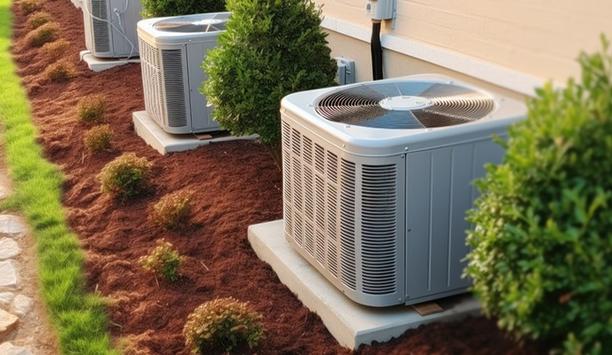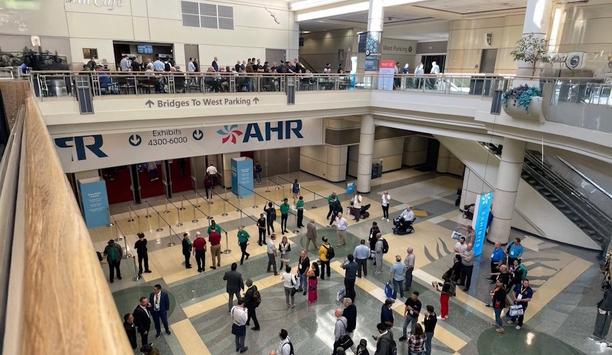A growing group of HVAC contractors have been discovering the advantages of Advanced RTU (Rooftop Unit) Controls, especially as they relate to energy savings. These controls can be installed and programmed by a contractor’s own technicians (without the need for a temperature controls subcontractor). Advanced RTU Controls are a new selling opportunity for commercial customers with rooftop units, says Matt Huffman, Senior Program Manager for Resource Innovations. And customers that have installed the controls typically see impressive energy savings and ease of use.
ARCs Climate Control And Energy Efficiency
A large slice of the commercial building stock is heated and cooled primarily by packaged rooftop units (RTUs). Most of these units are controlled by a simple thermostat on the wall. “This means that they are heating or cooling buildings to occupied levels 24/7, which is very wasteful,” says Huffman. “It would be fantastic if all these buildings could have a modern building automation system to manage the temperature setpoints and operating schedules. However, the reality is that savings can’t justify the very high expense of this system. An alternative is advanced RTU controls (ARCs) — economically feasible control upgrades for RTUs.”
The best applications are when the building has 4 or more RTUs that are 15 tons or larger"
Huffman says advanced RTU controls constitute a “middle ground” in the arena of climate control and energy efficiency. At the low end of the market, simple on/off switches or non-programmable thermostats are cheap, but not very smart or efficient. At the high end, custom building automation systems can do wonderful things, but they’re expensive and complicated.
Advanced RTU Controls
As the name implies, Advanced RTU controls are for buildings that are heated and cooled by packaged rooftop units, or RTUs. For many small-to-medium buildings (typically under 100,000 square feet) RTUs are the best option for an HVAC system. RTUs are low cost, easy to install and replace, and readily available. Larger buildings (over 100,000 square feet) are more commonly served by central plant systems (chillers, boilers, air handling units, VAV boxes, etc.) with building automation systems.
“For small-to-medium size buildings, Advanced RTU Controls are most cost-effective when the building has multiple, large tonnage RTUs,” says Huffman. “In my personal experience, the best applications are when the building has 4 or more RTUs that are 15 tons or larger.”
Main Components Explained
Huffman says the main components of an advanced RTU controls system are a variable speed drive (VSD) for the supply air fan motor, a digital controller for the airside economizer, a CO2 sensor to allow demand-controlled ventilation, and networked thermostats. In the following paragraphs, he explains each component:
- VSD - The VSD allows the supply fan airflow to be varied. Most standard RTUs have constant speed fans, which mean they always deliver the same amount of air when running. The supply fan is responsible for about 1/3 of the annual energy use of an RTU. Because of something called the fan affinity laws, reducing the flow rate of a fan will greatly reduce the power draw of that fan. So, the VSD allows adjustable airflow and energy savings. There are a few challenges with VSDs to be aware of, however. Not all existing fan motors are suitable for use with VSDs, so the motor may need to be replaced. And, unfortunately, motor replacement is not always practical because of OEM motor sizes.
- Digital Controller For Airside Economizer - The digital controller for the airside economizer is an upgrade over the standard electro-mechanical controller. The airside economizer brings in fresh ventilation air through the RTU. During mild weather, the economizer can provide “free cooling” without running the RTU compressor. A digital economizer operates with greater precision, allows fault detection and diagnosis, and makes demand-controlled ventilation much easier to implement. The existing economizer dampers and actuator may need to be replaced, so replacing the controller might not be the only work required.
- Demand-Controlled Ventilation - Demand-controlled ventilation is an energy-saving strategy that limits the amount of ventilation air when it is not needed. A perfect example is a conference room. The HVAC system may have been designed for 20 people in the room, but if the room isn’t occupied then it doesn’t need as much ventilation air. Because people exhale carbon dioxide (CO2), sensing the CO2 concentration in a room is a good way to estimate occupancy—i.e. high CO2 concentration means high occupancy (and full ventilation), while low CO2 means low occupancy (and less ventilation). CO2 sensors should always be installed in the “breathing zone” of a room when possible, although they can sometimes be installed in the return air duct of the HVAC system.
- Networked Thermostats - Finally, networked thermostats provide an easy way for building owners or occupants to adjust temperature setpoints and schedules, fan and economizer settings. They can also provide data-logging, which allows users to check performance trends over time. Compared to stand-alone standard thermostats, networking provides a high level of convenience for owners. Instead of needing to program each individual thermostat in a facility, ARC allows owners to simultaneously program all their thermostats, or groups of thermostats from a regular computer or smartphone. Owners can also quickly pinpoint problems with their RTUs from customizable alarms and notifications through the networked thermostats.
 |
| As the name implies, Advanced RTU controls are for buildings that are heated and cooled by packaged rooftop units, or RTUs |
energy efficiency programs
While there are comfort improvement aspects to Advanced RTU Controls, the main reason to install ARC is energy efficiency. The main components—supply fan VSD, digital economizer controller, CO2 sensor for demand-controlled ventilation, and networked thermostats—all contribute to energy savings. Field testing performed and published by the Pacific Northwest National Laboratory found savings from 25-50% depending on location.
Many utility companies offer energy efficiency programs, and many of these programs recognise Advanced RTU Controls as an effective savings measure. The incentives may vary—from individual components (like the VSD) to the entire ARC package. Whatever the dollar amount, energy efficiency incentives help reduce the first cost and drastically improve the ROI, says Huffman.
Complementary Incentives
Additionally, it’s important to recognize that both electric and gas utilities may have complementary incentives for thermostats and demand-controlled ventilation.
According to the research from Pacific Northwest National Laboratory, a 3-year payback is typical for ARC
According to the research from Pacific Northwest National Laboratory, a 3-year payback is typical for ARC. “However, speaking from my personal experience, even better ROIs are possible in the right scenario,” says Huffman. “know of at least one ARC project at a large industrial facility that had an initial cost of over $100,000 but was free for the client with utility incentives. As the customer said at the time, ‘free is always in the budget.’”
Advanced RTU Campaign
There are several different manufacturers who are offering ARC options. Each manufacturer approaches the market in their own way. A good resource for information is the Advanced RTU Campaign, from the US Department of Energy, ASHRAE (American Society of Heating, Refrigerating and Air-Conditioning Engineers), and RILA (Retail Industry Leaders Association). The website is www.advancedrtu.org
Resource Innovations, headquartered in Half Moon Bay, Calif., is an environmental and energy efficiency consultancy whose clients are large electric and gas utilities in different areas of the United States. Resource Innovations also has offices in Chicago, Madison, St. Louis, and Portland. HVAC represents 30-50% of the energy use in buildings in the U.S. and are a major focus of most utility energy efficiency programs. Resource Innovations lends their expertise to help these programs run better and help more customers save energy and money.




































